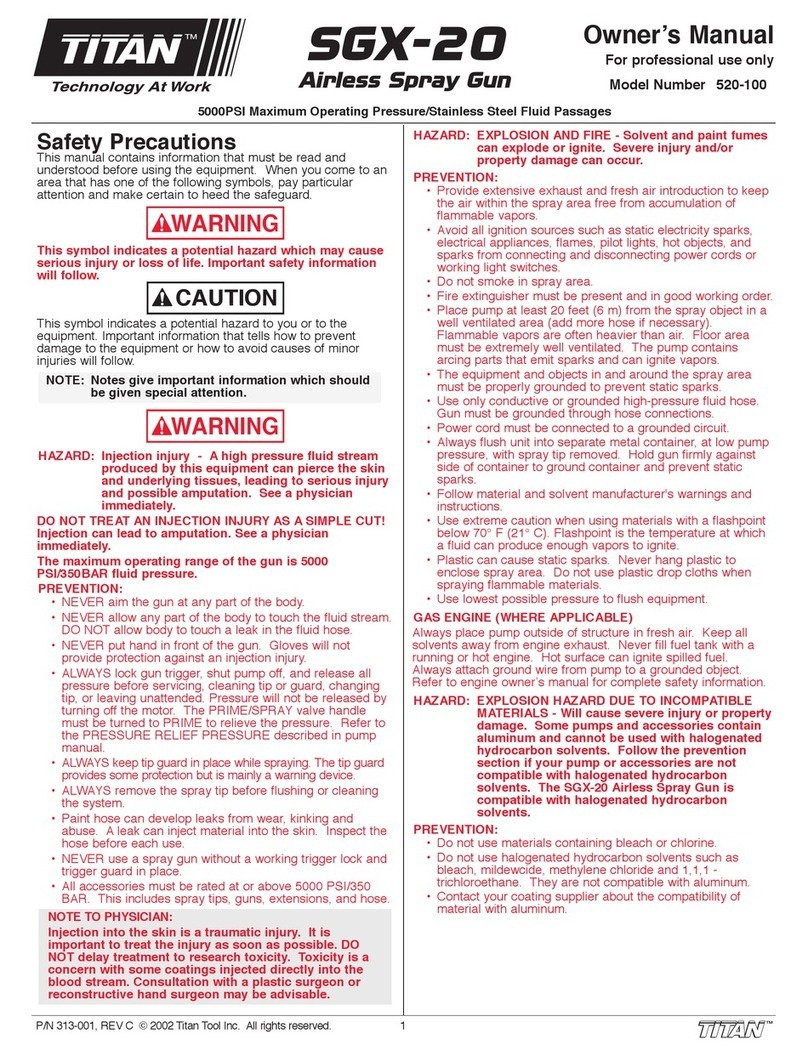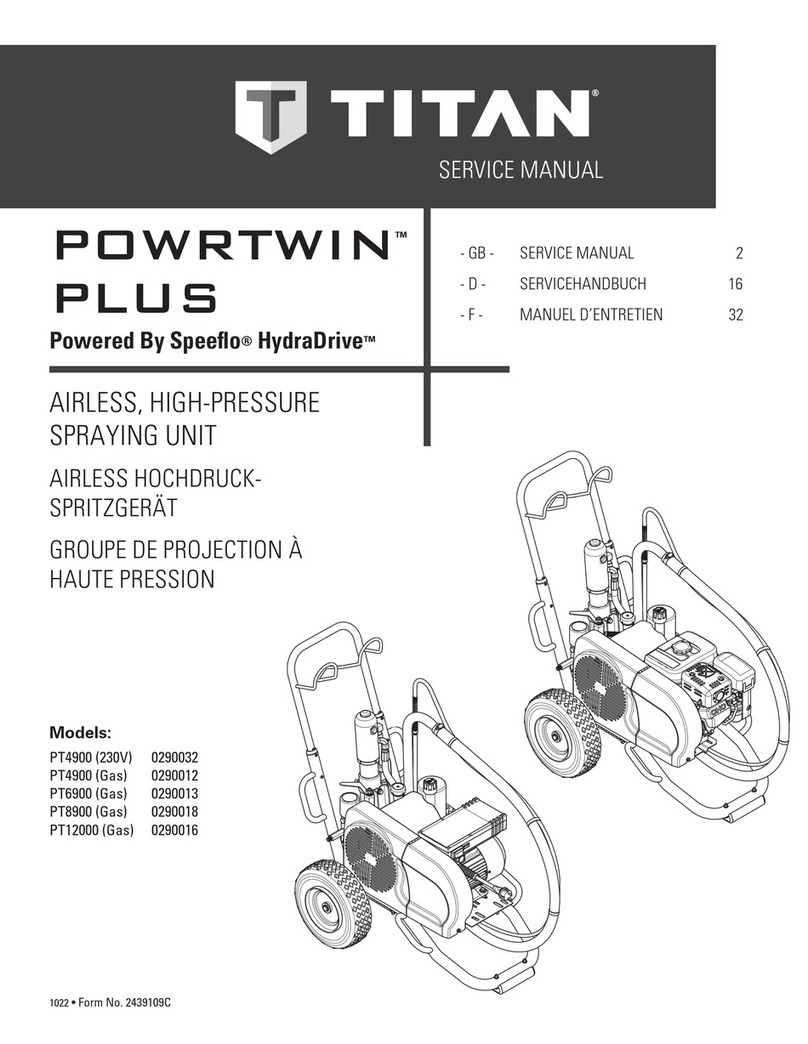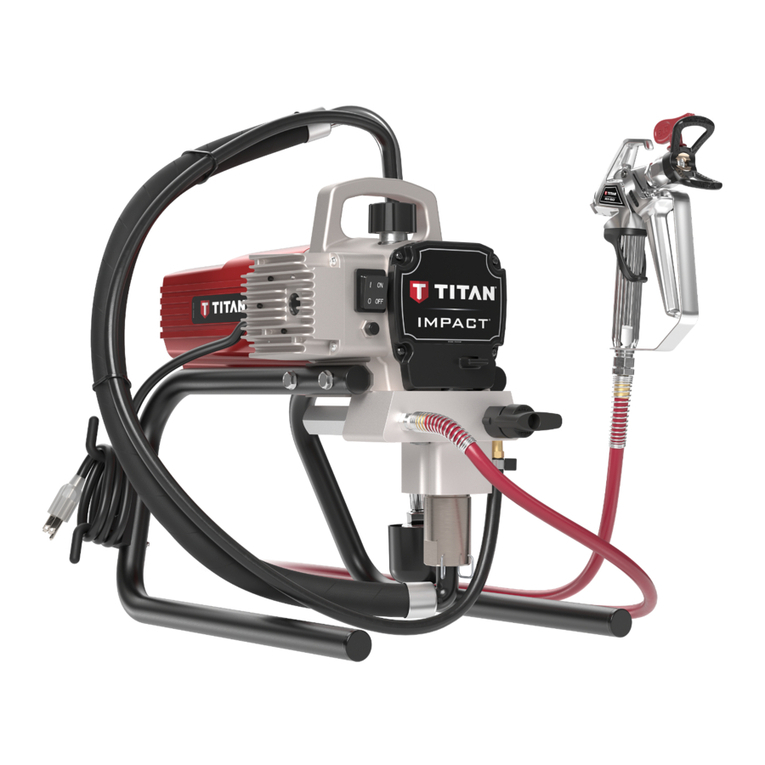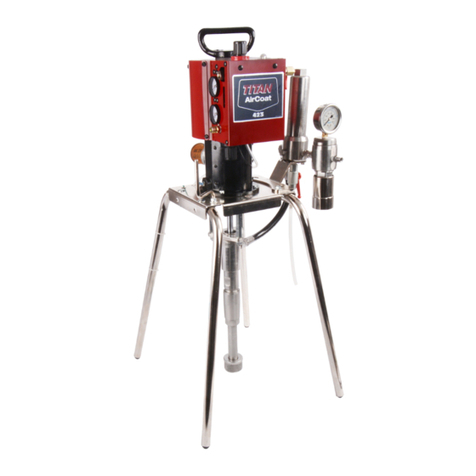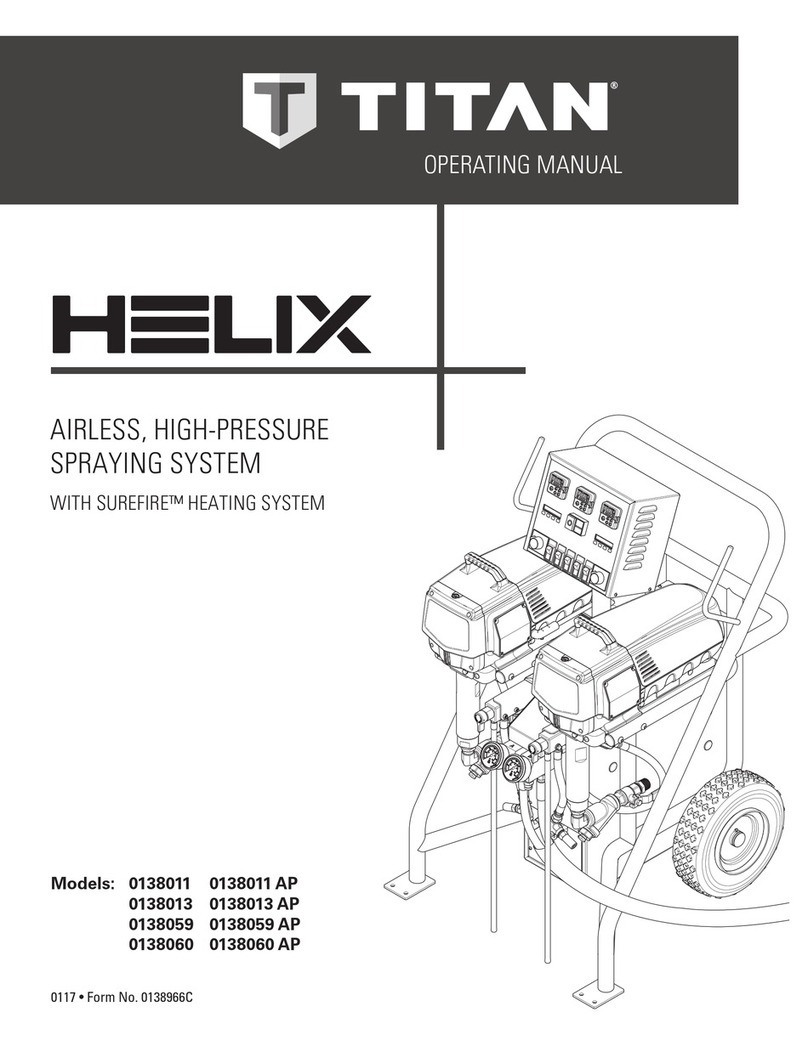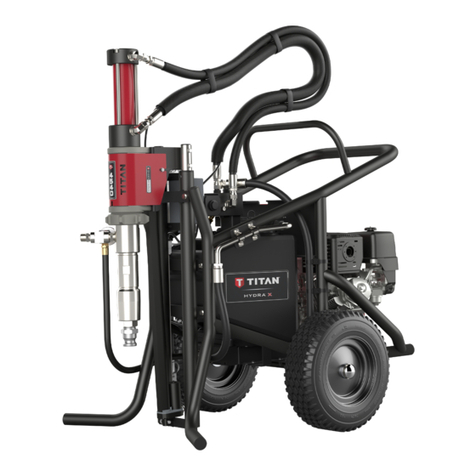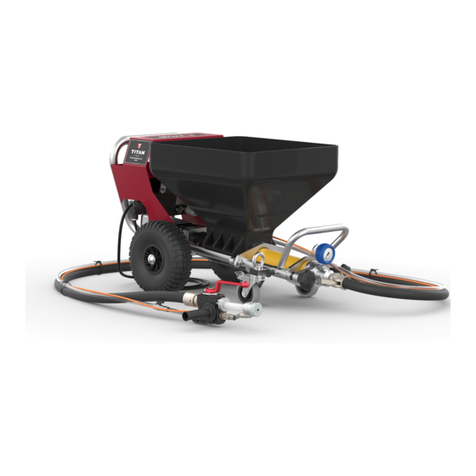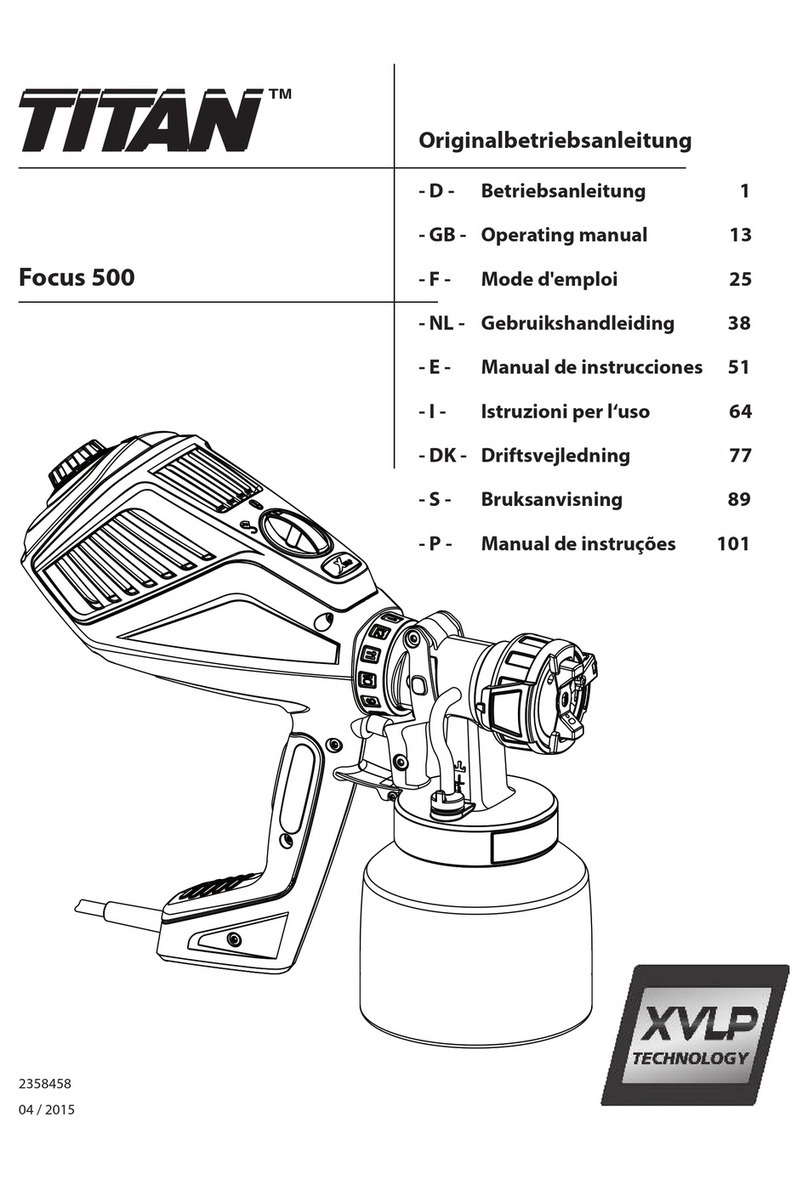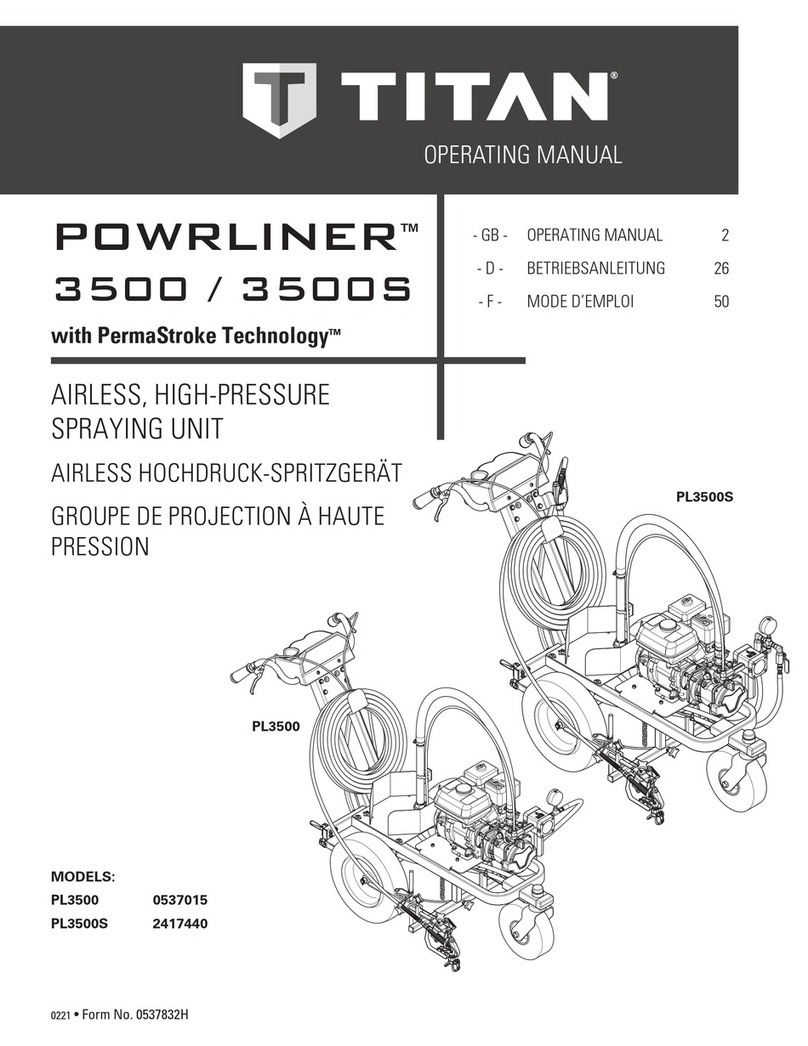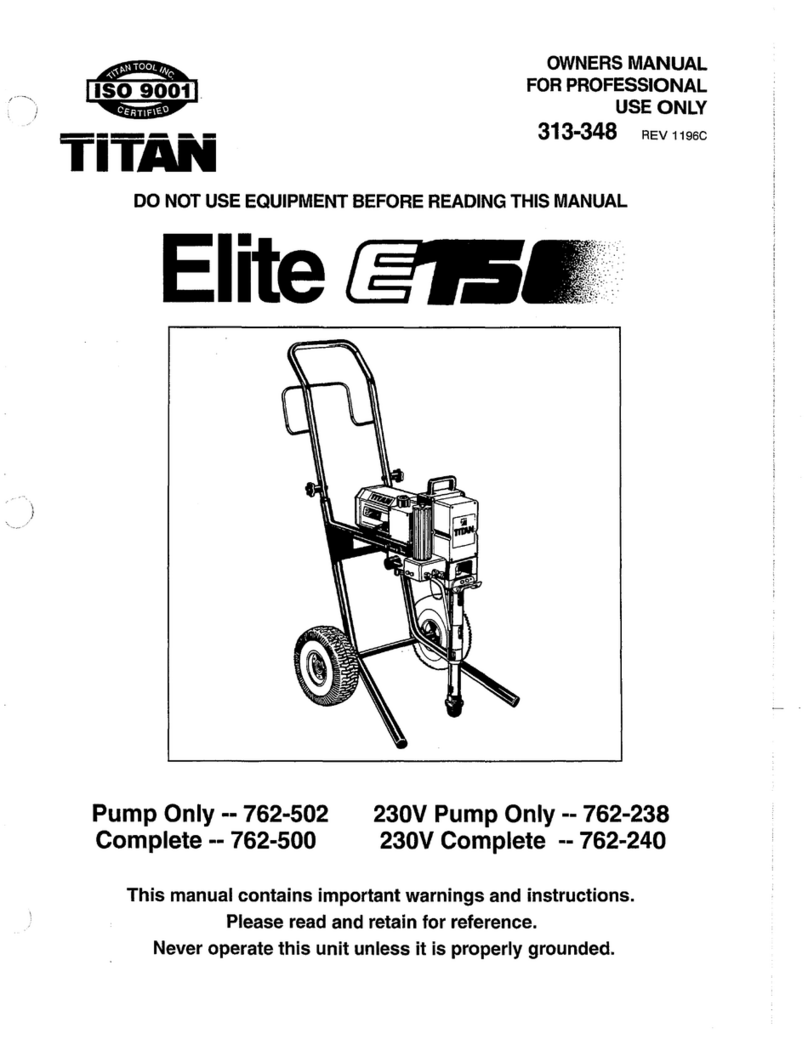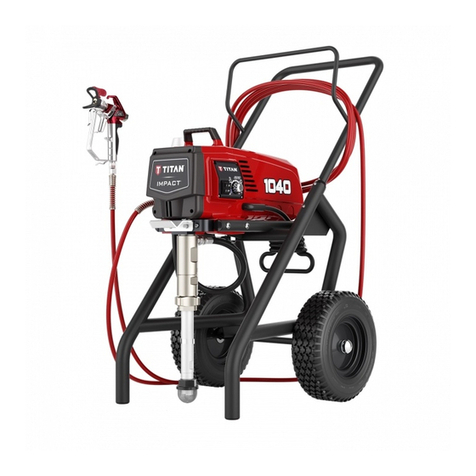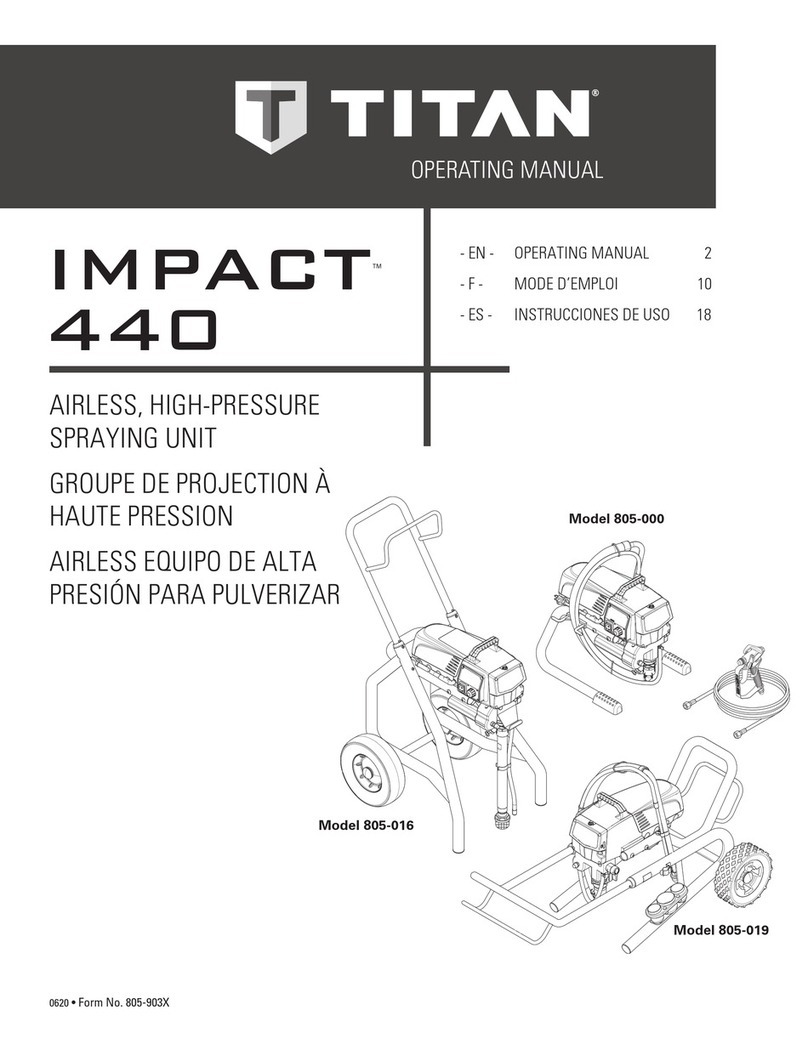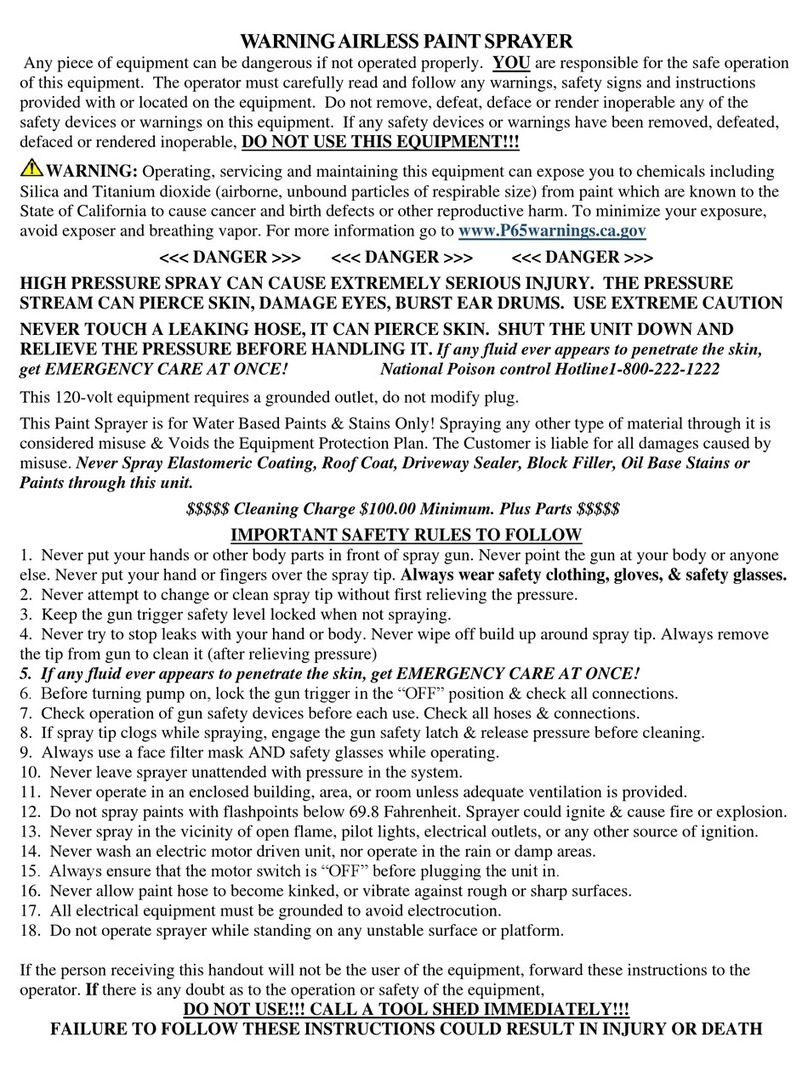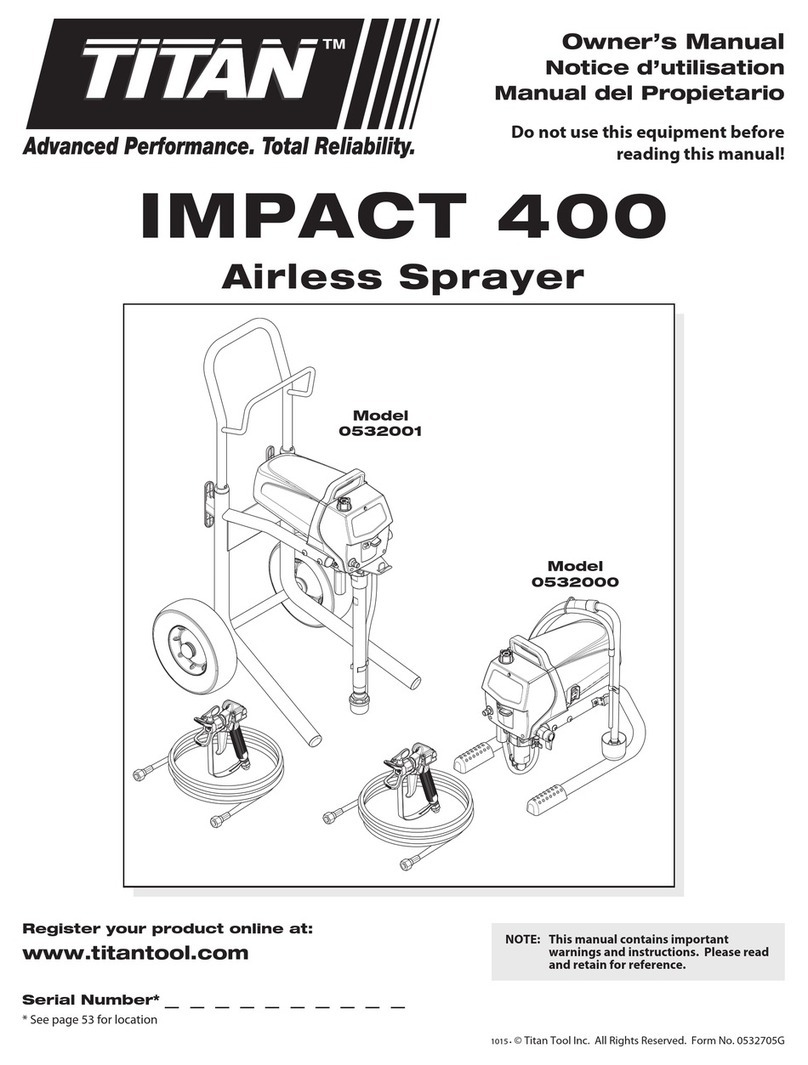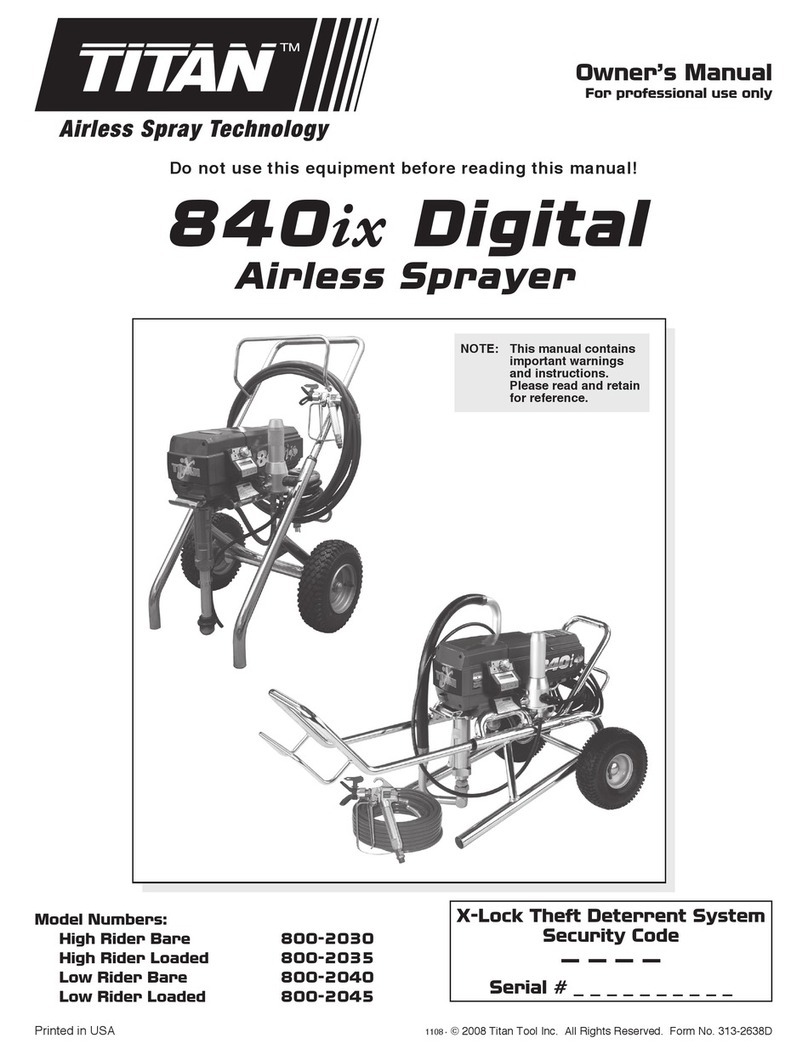
PowrCoat 3
GB
Safety precautions
HAZARD: EXPLOSION OR FIRE
Flammable vapors, such as solvent and paint vapors,
in work area can ignite or explode.
PREVENTION:
•Useequipmentonlyinwellventilatedarea.Keepagoodsupply of fresh air moving through the area to keep the air
within the spray area free from accumulation of ammable
vapors.Keeppumpassemblyinwellventilatedarea.Donotspray pump assembly.
•Eliminateallignitionsources,suchaspilotlights,cigarettes,portable electric lamps and plastic drop cloths (potential static
arc).
•Keepworkareafreeofdebris,includingsolvent,ragsandgasoline.
•Donotplugorunplugpowercords,orturnpowerorlightswitches on or o when ammable vapors are present.
•Groundequipmentandconductiveobjectsinworkarea.Make sure the grounding cable is connected from the
grounding lug to a true earth ground.
•Useonlygroundedhoses.•Holdspraygunrmlytothesideofagroundedpailwhentriggering into pail.
•Ifthereisstaticsparkingorifyoufeelashock,stop operation
immediately.
•Knowthecontentsofthepaintandsolventsbeingsprayed.Read all Material Safety Data Sheets (MSDS) and container
labels provided with the paints and solvents. Follow the paint
and solvent manufacturer’s safety instructions.
•Donotuseapaintorsolventcontaininghalogenatedhydrocarbons. Such as chlorine, bleach mildewcide,
methylene chloride and trichloroethane. They are not
compatible with aluminum. Contact the coating supplier
about compatibility of material with aluminum.
•Keepareextinguisherinworkarea.HAZARD: HAZARDOUS VAPORS
Paints, solvents, and other materials can be harmful
if inhaled or come in contact with body. Vapors can
cause severe nausea, fainting, or poisoning.
PREVENTION:
•Wearrespiratoryprotectionwhenspraying.Readallinstructions supplied with the mask to be sure it will provide
the necessary protection.
•Alllocalregulationsregardingprotectionagainsthazardousvapors must be observed.
•Wearprotectiveeyewear.•Protectiveclothing,glovesandpossiblyskinprotectioncreamare necessary for the protection of the skin. Observe the
regulations of the manufacturer concerning coating materials,
solvents and cleaning agents in preparation, processing and
cleaning units.
HAZARD: GENERAL
This product can cause severe injury or property
damage.
PREVENTION:
•Followallappropriatelocal,state,andnationalcodesgoverning ventilation, re prevention, and operation.
•Pullingthetriggercausesarecoilforcetothehandthatisholding the spray gun. The recoil force of the spray gun is
particularly powerful when the tip has been removed and
a high pressure has been set on the airless pump. When
cleaning without a spray tip, set the pressure control knob to
the lowest pressure.
•Useonlymanufacturerauthorizedparts.Userassumesallrisks and liabilities when using parts that do not meet the
minimum specications and safety devices of the pump
manufacturer.
•ALWAYSfollowthematerialmanufacturer’sinstructionsforsafe handling of paint and solvents.
•Cleanupallmaterialandsolventspillsimmediatelytopreventslip hazard.
•Wearearprotection.Thisunitcanproducenoiselevelsabove85dB(A).•Neverleavethisequipmentunattended.Keepawayfromchildren or anyone not familiar with the operation of airless
equipment.
•Deviceweighsinexcessof36kg.Three-personliftisrequired.•Donotsprayonwindydays.•Thedeviceandallrelatedliquids(i.e.hydraulicoil)mustbedisposed of in an environmentally friendly way.
1.2 Compressor Safety
PowrCoat units are Air-Powered (powered by an air compressor).
Follow all safety precautions given by the compressor manufacturer
regarding electrical and general safety.
Locatethecompressoroutsidetheimmediatesprayingareatoavoidclogged air intake of the compressor with overspray.
If lacquer or other flammable materials are to be
sprayed, ALWAYS locate the compressor outside the
immediate spraying area. Failure to do so may cause
an explosion.
